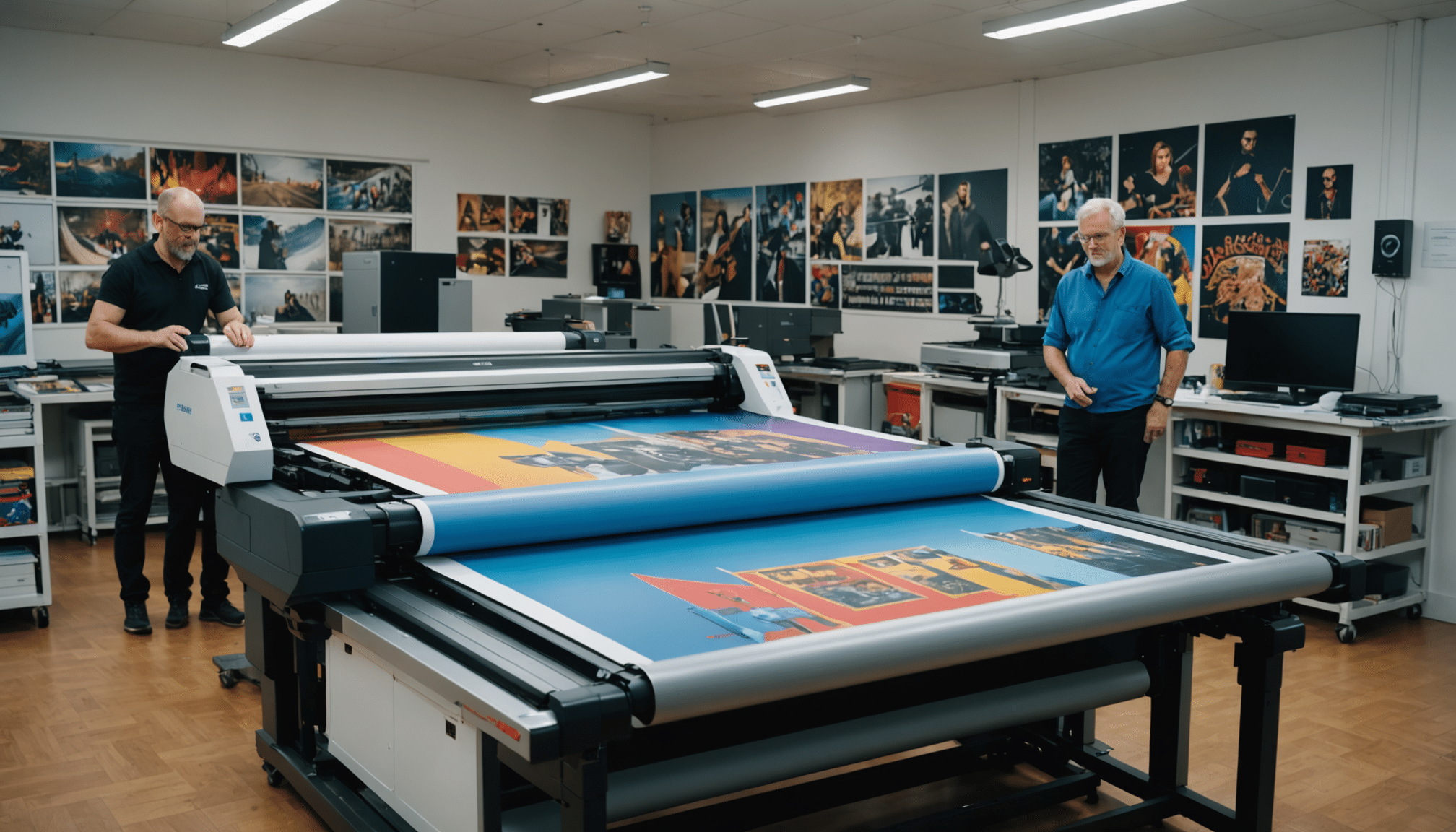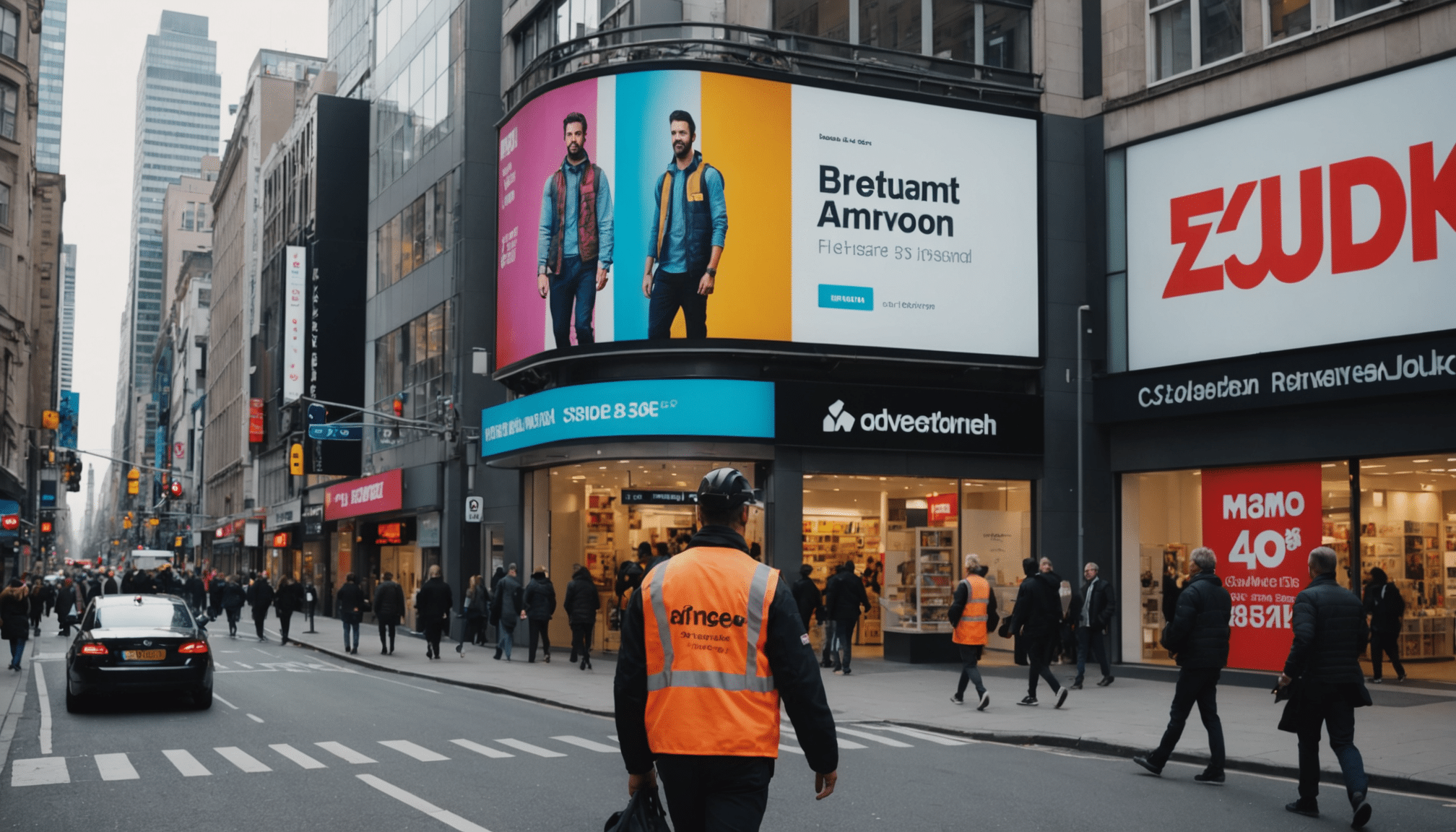
What Is Large Format Printing? Everything You Need to Know
Discover the POWER of large format print! Learn how different PRINTING FORMATS work, from digital print to offset, and find the right PRINTER for your needs.
Large format printing is a specialised printing process designed for producing oversized materials such as banners, posters, and signage. Often used in marketing and advertising, it helps businesses and organisations create eye-catching displays. This method uses advanced digital print technology to ensure high-quality visuals on various materials, making it ideal for branding and promotional needs.
What is large format printing used for?
Large format printing is used for creating oversized prints such as banners, posters, signage, and marketing materials. It is commonly used in advertising, retail displays, event promotions, and architectural plans. This printing method ensures high-quality graphics on various materials for both indoor and outdoor applications.
Key Facts About Large Format Printing
- Large format print is used for oversized materials like banners, posters, and signage.
- Common printing methods include digital print, wide format printing, and offset printing.
- High-resolution graphics ensure sharp images on various substrates, including vinyl and aluminium.
- Businesses use large format print for marketing, advertising, and retail displays.
- Billboards, vehicle wraps, and murals are examples of large format applications.
- Choosing the right printer and material affects durability and colour accuracy.
- To avoid errors, use high-resolution images and the correct CMYK colour model.

Types of Large Format Printing
Large format print technology comes in different flavours, each suited to specific applications. The most common is digital print, which delivers vibrant colours and high resolution on a variety of materials. Then there’s wide format printing, ideal for creating larger-than-life banners and signage without losing quality. Offset printing, though less common, is useful for bulk orders where cost-effectiveness is key.
Format printers come in various types, such as inkjet and solvent-based printers. Inkjet printers are great for high-quality posters and photography prints, while solvent-based printers handle outdoor materials that need to withstand the elements. Large format print isn’t just about size—it’s about choosing the right process for the job.
The best printer for the task depends on factors like substrate choice, durability needs, and print volume. Whether it’s a billboard towering over a motorway or a simple vehicle vinyl wrap, the right printing technology makes all the difference.
Common Uses of Large Format Printing
Large format printing is everywhere—you’ve probably walked past dozens of examples today. From giant billboards along highways to promotional banners in shopping centres, this print method dominates visual marketing. Businesses use large format print to grab attention and reinforce brand identity through eye-catching graphics, ensuring their message sticks.
It’s not just about advertising. Retail stores rely on large format signage for sales promotions, while event organisers use it for wayfinding. Floor graphics guide people through spaces, and murals transform bland walls into artistic statements. Whether for practical or decorative use, these prints bring spaces to life.
Even construction sites use large format print to display project plans and safety notices. Ever seen those massive printed hoardings around a new building? That’s large format printing at work—turning dull barriers into engaging, informative visuals.
Materials Used in Large Format Printing
Choosing the right substrate is crucial for a successful large format print. Paper is a common choice for posters, but when durability is needed, options like vinyl, polyvinyl chloride, and textile come into play. These materials are weather-resistant and perfect for outdoor signage or vehicle wraps that need to withstand wind, rain, and sun.
Aluminium is another popular choice, particularly for high-end signage. It’s sleek, durable, and resistant to fading, making it ideal for long-term use. Wood and rigid board substrates also offer a unique aesthetic, often used for in-store displays or premium art prints.
The choice of substrate impacts not just durability but also colour vibrancy. High-resolution graphics pop differently on glossy versus matte finishes. Understanding these material differences ensures a print that looks sharp and lasts long, no matter the environment.
Avoiding Common Large Format Printing Mistakes
Size matters, but so does image quality. A common mistake in large format printing is using low-resolution images. What looks sharp on a computer screen can turn into a pixelated mess when blown up to billboard size. Rule of thumb: the higher the resolution, the better the result.
Another issue? Colour inconsistencies. RGB colour model works for screens, but print requires CMYK. If colours look off in your prints, a mismatch here could be the culprit. Checking colour profiles before sending files to the printer can prevent costly mistakes.
Lastly, don’t ignore the bleed area. Printers need extra space around the edges to ensure clean cuts. Forget this step, and important details might be trimmed off. Keeping these factors in mind ensures your large format print turns out exactly as intended.
| Printing Type | Best Used For | Durability |
|---|---|---|
| Digital Print | Posters, photography, high-resolution graphics | Medium |
| Wide Format Printing | Banners, signage, large-scale advertising | High |
| Offset Printing | Bulk orders, cost-effective production | Medium |
| Inkjet Printing | Fine art prints, detailed images | Medium-High |
| Solvent-Based Printing | Outdoor applications, vehicle wraps | Very High |
Conclusion
Large format printing is a powerful tool for businesses looking to stand out. Whether it’s a striking banner, detailed signage, or high-resolution graphics, the right print can elevate a brand’s visibility and create lasting impressions. Choosing the right materials and technology ensures quality and durability.
At Viking, we understand the importance of high-impact workplace solutions. Whether you need large format print for marketing, office displays, or promotional materials, we offer cost-effective options to suit your needs. Get in touch with us to explore professional printing solutions that enhance your workspace.
Frequently Asked Questions
How does large format printing work?
Large format printing uses specialised format printers designed to handle oversized materials. These printers apply ink in high resolution onto substrates like paper, vinyl, or polyvinyl chloride. The process can involve digital printing or wide format printing, ensuring sharp graphics for banners, posters, signage, and vehicle vinyl wraps.
What are common uses for large format print?
Large format print is widely used for marketing and advertising. It is commonly found in banners, billboards, posters, retail displays, and construction site signage. Businesses use it for high-impact graphics to capture attention, while event organisers rely on it for branding, wayfinding, and promotional materials in both indoor and outdoor spaces.
What materials are used for large format printing?
The choice of substrate depends on the application. Paper works for posters, while vinyl and polyvinyl chloride are preferred for durable outdoor signage. Aluminium offers a sleek, professional finish, and textiles are often used for fabric-based banners. Each material ensures high-quality prints suited to its intended environment.
Can large format printing be used for indoor wall murals?
Yes, large format print is excellent for indoor murals. High-resolution graphics can be printed on wallpaper, canvas, or vinyl, transforming office spaces, retail stores, and public areas. With the right ink and substrate, murals maintain vibrant colours and detail, making them an ideal solution for branding and decorative purposes.









